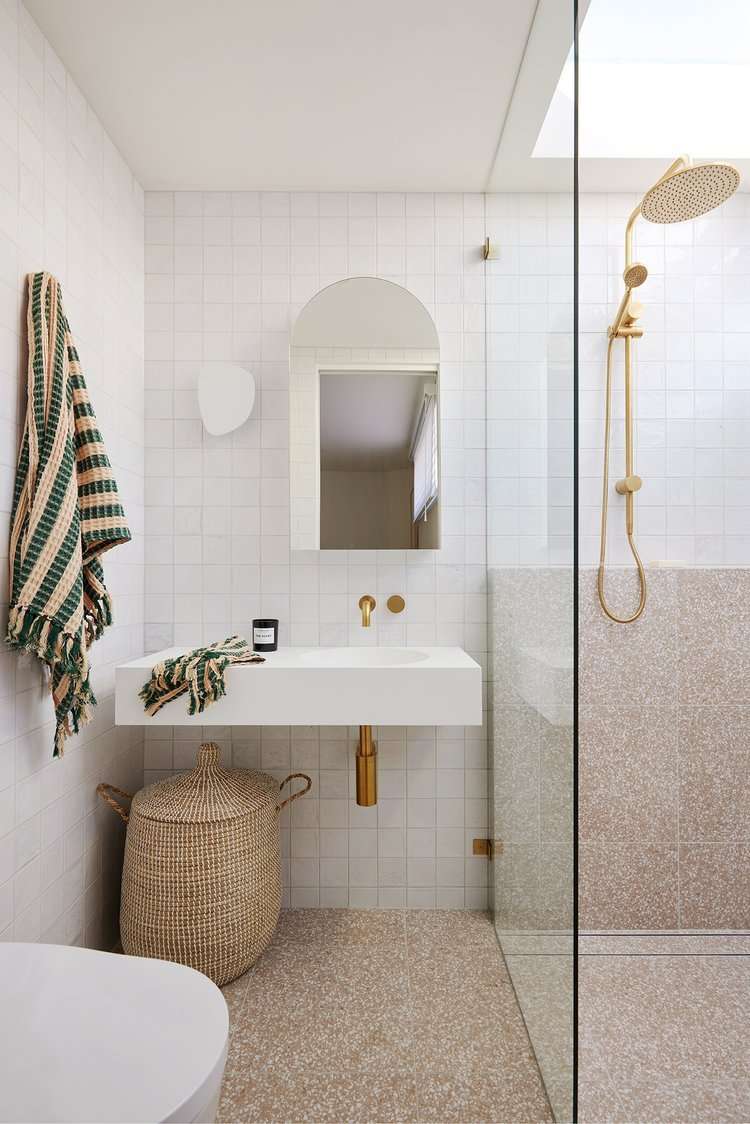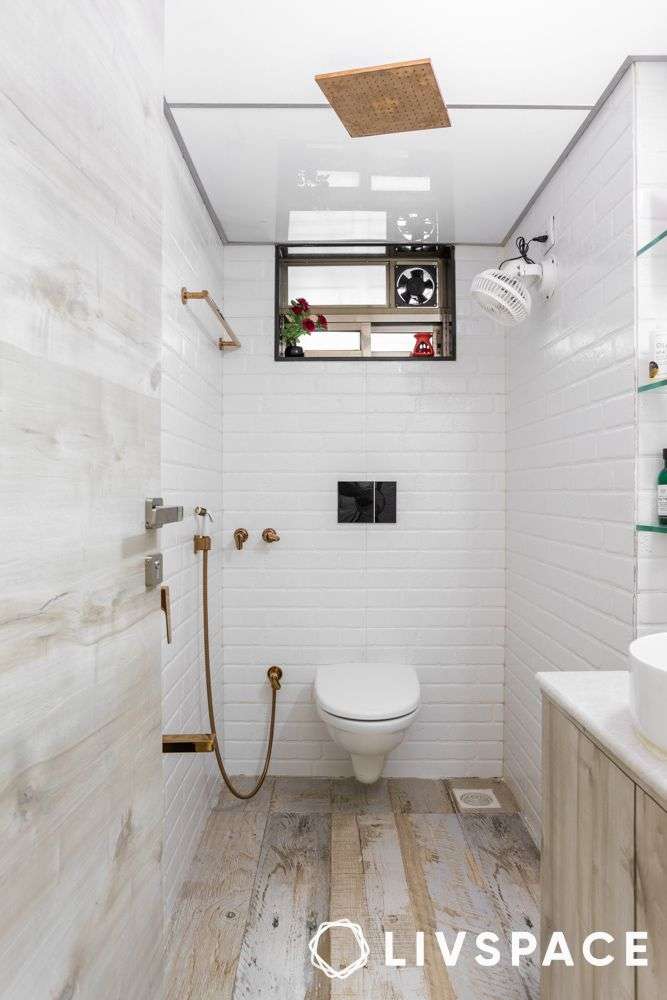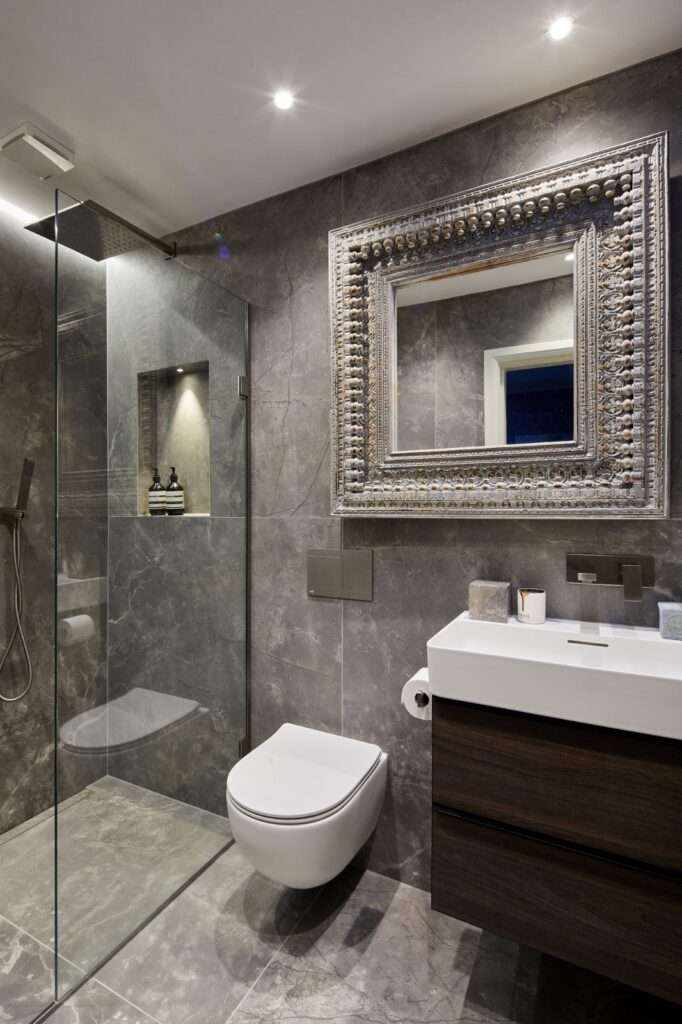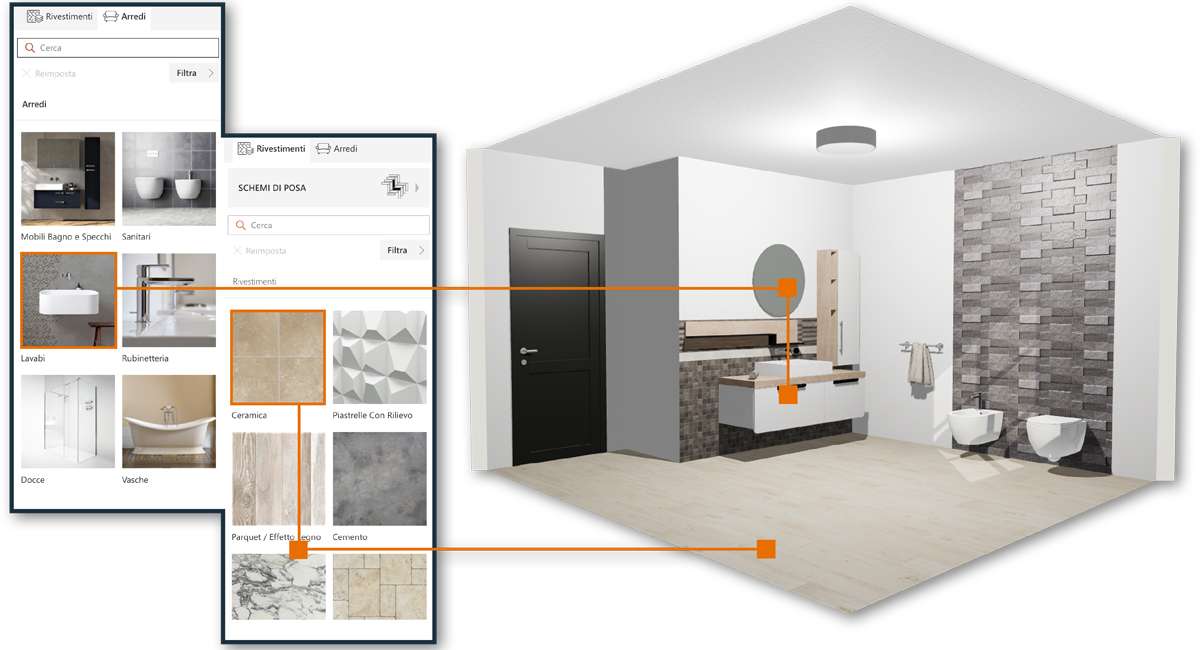The allure of Nordic Scandinavian bathroom design lies in its understated elegance and functional simplicity. It’s a style that prioritizes light, natural materials, and a calming atmosphere, creating a space that feels both refreshing and inviting. This design philosophy embraces minimalism, focusing on essential elements and de-cluttering to promote a sense of tranquility. A well-executed Nordic Scandinavian bathroom design transcends mere aesthetics; it enhances the daily rituals of self-care with a focus on practicality and serene beauty.
Key Elements of Nordic Scandinavian Bathroom Design
- Neutral Color Palette: Think whites, grays, and soft blues. These colors reflect light and create a sense of spaciousness.
- Natural Materials: Wood, stone, and linen are frequently used to bring warmth and texture to the space.
- Minimalist Fixtures: Opt for clean lines and simple shapes in your faucets, showerheads, and vanities.
- Abundant Lighting: Maximize natural light and supplement with soft, ambient lighting.
- Greenery: Add a touch of nature with potted plants or hanging greenery.
Creating a Spa-Like Atmosphere
Beyond the core elements, consider incorporating features that enhance the relaxation and well-being associated with spa experiences. A heated towel rack, for instance, adds a touch of luxury and comfort. Think about incorporating organic soaps and lotions, and placing candles to create a warm and inviting glow. These small details can make a big difference in transforming your bathroom into a personal oasis.
Essential Accessories
- Woven baskets for storage
- Linen towels
- Wooden bath mats
- Simple mirrors
The Practicality of Simplicity
One of the most appealing aspects of this design style is its inherent practicality. The focus on minimalism and functionality makes it easy to maintain a clean and organized space. The use of durable, natural materials ensures longevity and reduces the need for frequent replacements. This approach not only creates a beautiful bathroom but also a sustainable and efficient one. The design should be durable for a long time for the user.
Embracing the ‘Hygge’ Concept
Hygge, a Danish concept of coziness and contentment, is central to Nordic Scandinavian design. To fully embrace this concept, focus on creating a space that feels warm, inviting, and comfortable. Add soft textiles, such as thick rugs and plush towels. Consider adding a small seating area where you can relax and unwind. These elements will help you create a bathroom that is not only beautiful but also a sanctuary for the soul. This design is so practical and easy to use.
Finally, remember that Nordic Scandinavian bathroom design is about creating a space that reflects your personal style and promotes well-being. By focusing on simplicity, natural materials, and a calming atmosphere, you can transform your bathroom into a tranquil retreat that you’ll enjoy for years to come.
Implementing these principles can be achieved on various budgets, from simple updates to complete renovations. Small changes like swapping out dark hardware for brushed nickel or painting walls a lighter shade can make a significant impact. Investing in high-quality, sustainably sourced materials ensures longevity and aligns with the ethical considerations often associated with Scandinavian design. Consider incorporating vintage or repurposed items to add character and uniqueness to the space.
ADAPTING THE STYLE TO DIFFERENT BATHROOM SIZES
The beauty of Nordic Scandinavian design lies in its adaptability. Whether you have a small powder room or a spacious master bath, the principles can be applied effectively. In smaller spaces, prioritize light colors and ample storage to maximize the perceived size and minimize clutter. In larger bathrooms, you have more freedom to incorporate features like a freestanding bathtub or a separate shower area. Regardless of size, maintaining a sense of balance and harmony is key.
MAXIMIZING SPACE IN SMALLER BATHROOMS
– Wall-mounted vanities and toilets free up floor space.
– Mirrored cabinets provide storage without adding bulk.
– Glass shower doors allow light to flow through the room.
– Vertical storage solutions, such as shelving units, utilize wall space effectively.
MAINTAINING YOUR NORDIC SCANDINAVIAN BATHROOM
The minimalist nature of this design style makes it relatively easy to maintain. Regular cleaning and decluttering are essential for preserving the sense of tranquility. Use gentle, natural cleaning products to avoid damaging the natural materials. Periodically check and maintain fixtures to prevent leaks and ensure optimal performance. With proper care, your Nordic Scandinavian bathroom will remain a beautiful and functional space for years to come.
Ultimately, a successful Nordic Scandinavian bathroom is one that is both aesthetically pleasing and practically functional. It’s a space where you can start and end your day feeling refreshed and rejuvenated, surrounded by simplicity, serenity, and a touch of natural beauty.
Budget considerations are also key when embarking on a Nordic Scandinavian bathroom project. From cost-effective updates to high-end renovations, the design principles can be adapted to suit various financial constraints. Focusing on essential elements and prioritizing quality over quantity can help achieve the desired aesthetic without breaking the bank. Sourcing materials locally and considering DIY options can also contribute to cost savings.
BUDGET-FRIENDLY OPTIONS
– Repainting existing cabinets instead of replacing them.
– Using cost-effective tiles that mimic the look of natural stone.
– Shopping for affordable accessories at discount retailers.
– Opting for a simple, budget-friendly mirror.
HIGH-END CONSIDERATIONS
– Investing in designer fixtures and fittings.
– Using premium natural stone for countertops and flooring.
– Installing a custom-built vanity with high-end storage solutions.
– Adding a luxurious freestanding bathtub.
THE IMPORTANCE OF LIGHTING
Lighting plays a crucial role in creating the desired atmosphere in a Nordic Scandinavian bathroom. Natural light should be maximized whenever possible. Large windows, skylights, and glass doors can help bring natural light into the space. Complement this with soft, ambient lighting. Recessed lighting, wall sconces, and pendant lights can provide functional and aesthetically pleasing illumination. Dimmable lights allow for adjusting the brightness to create a relaxing mood. The use of warm-toned bulbs can enhance the feeling of coziness.
Choosing the right textiles is another important aspect of achieving a Nordic Scandinavian aesthetic. Linen, cotton, and wool are popular choices for towels, rugs, and shower curtains. These natural materials add texture and warmth to the space. Neutral colors and simple patterns are typically preferred. Avoid overly ornate or busy designs. The textiles should be soft, comfortable, and durable.
Incorporating personal touches can help personalize your Nordic Scandinavian bathroom. Displaying artwork, photographs, or cherished objects can add character and individuality to the space. A carefully chosen vase, a collection of seashells, or a piece of pottery can add a touch of personality without cluttering the room. Remember to keep the overall design minimalist and avoid overcrowding the space with too many accessories.
Adapting this design to different climates may require certain adjustments. In colder climates, prioritize insulation and heating to create a warm and comfortable space. Heated floors can be a welcome addition in colder regions. In warmer climates, focus on ventilation and cooling to keep the bathroom fresh and airy. Consider using lighter materials and colors to reflect heat. Regardless of the climate, the core principles of simplicity, functionality, and natural elements should remain central to the design.
In the end, the goal is to create a space that is both beautiful and functional, a sanctuary where you can relax and rejuvenate.






